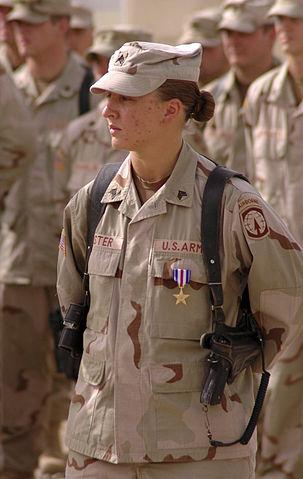
Women in the military
On December 3rd, the U.S. Secretary of Defense Ash Carter made a game-changing announcement for women in the military. All active combat roles, he proclaimed, would become open to women. They can now serve as infantry soldiers, Navy SEALS, Green Berets, and other Special Forces operatives in departments previously closed to them. This decision not only countered the military’s reputation as a sexist bastion of conservatism, but will also tangibly benefit women in the military’s careers by allowing them to rise to higher ranks than was previously possible.
Thanks to the Women’s Armed Services Integration Act, women have been allowed to enlist in the Army, Navy, Air Force, and Marines since 1948 – the same year official racial segregation in the armed forces ended. Women had previously served only as nurses, with increasing levels of organization and recognition.
Even since being permitted to enlist, however, many women’s contributions to the military have gone relatively unrecognized. Carter’s announcement that any woman who “qualif[ies] and meet[s] the standards” does much to recognize that women are, and have been, capable and valuable soldiers. For example, many women have ended up in the line of fire in Iraq and Afghanistan even if they technically did not occupy combat roles. 300,000 women were deployed to conflict zones during these wars and they made up 2 percent of casualties — a proportion that, given how relatively few women are enlisted overall, is notable.
There has been push back on this new mandate, however — most notably from the Marines. Secretary Carter’s announcement responded to a 2013 challenge by the Obama administration to open combat to women by 2016 or otherwise prove the need for exemptions. The Marines specifically responded to this requirement with a study that seemed to corroborate the notion that incorporating women would decrease their overall effectiveness.
Some claim that the study’s results were skewed because they measured physical tasks that disproportionately involved upper body strength, a biological disadvantage for women, rather than take measurements based on a universal, fair standard. Additionally, the advocacy group Women in International Security leaked a larger portion of the study in October which included other evidence suggesting women could, in fact, successfully integrate — such as the finding that mixed-gender groups solved problems more efficiently and required fewer disciplinary actions.
Another concern raised by many is the already prevalent phenomenon of sexual assault in the military: around 5,000 assaults occurred overall in the military in just 2014. The Marines study did examine the possibility of increased sexual assault, but found integrated infantry units had no more cases than in the Marines as a whole. This speaks to what activists in the space have said for years: Sexual assault is not incited by the mere presence or particular behavior of women, but is a much more complex, systemic problem. It also seems possible that the augmented respect of women as authority figures in this sector might gradually change the treatment and perception of women for the better.
Ultimately, the study did not prove incorporating women would produce negative effects. As Ellen Haring, a reserve Army colonel and senior fellow at Women in International Security, noted, “there has been this band of brothers idea that there is something special about having only men, and adding women will ruin it.” The study, she said, “doesn’t bear that out.”
Americans have every reason to celebrate and remain hopeful about this change. In fact, two women have already become the first to graduate from elite Ranger training. Hopefully, they — as well as many women to come — will prove that a more inclusive military is also a more effective one.

